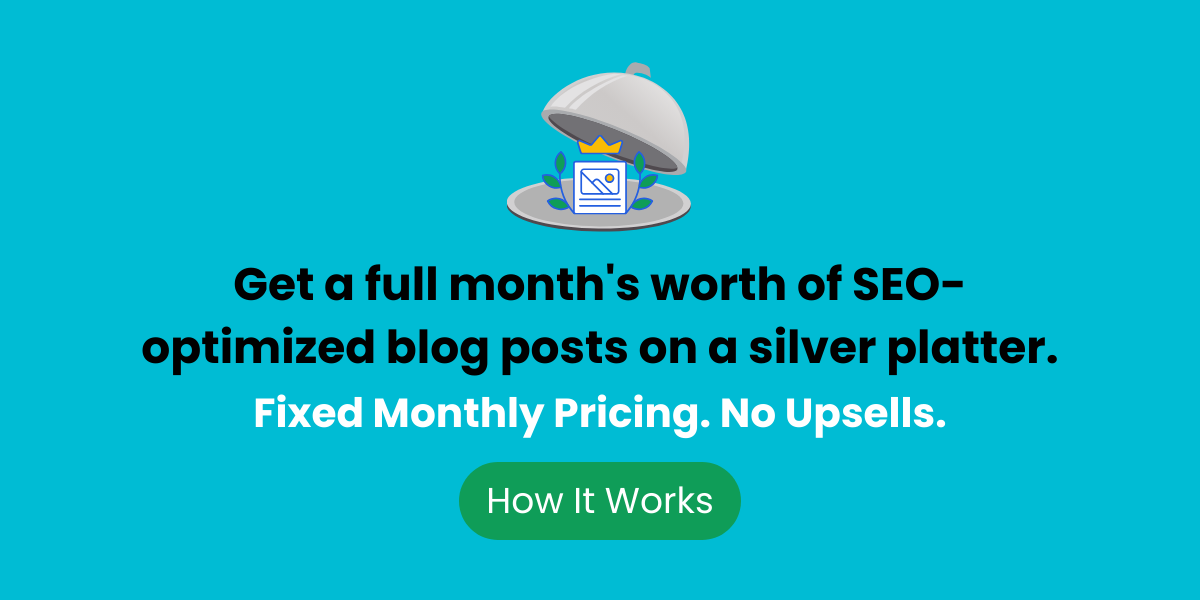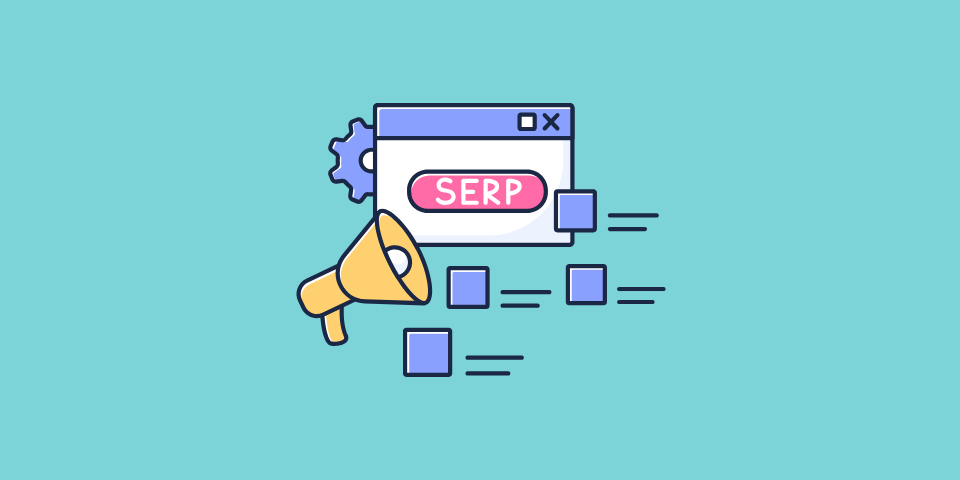How can I get more leads from my website? If that’s what you wonder, I feel your pain. It’s frustrating when you pour your heart and soul into your online presence, only to hear crickets. But here’s the thing: generating leads from your website doesn’t have to be a mystery.
I’ve been there, done that, and I’m here to share my secrets. Ready to turn your website into a lead-generating machine? Let’s do this! Let’s identify strategies to answer the question “how can I get more leads from my website?”
Optimize Your Website for Lead Generation
Your website is the heart of your online business. So ensuring that it is optimized to maximize lead-generation is vital to securing the long-term success of your lead generation strategy. The question then is, how do you create a website that is:
- Easy to navigate
- Captures leads effectively
- Provides a great user experience
- Able to support a lead generation marketing campaign
It all starts with taking a hard look at your current website design and UX design. Consider your website’s different elements that could be improved, from the copy to the content to the UX, and revamp your lead generation strategy.
Improve Website Navigation
When a website visitor lands on your site, you have mere seconds to capture their attention and guide them to take action. That’s why clear, intuitive navigation is critical. Implement a logical menu structure, use clear labels, and make sure your search bar is prominent and returns relevant results. The easier you make it for visitors to find what they need, the more likely they are to stick around and become a lead.
Implement Effective Calls-to-Action
Once you have your visitor’s attention, you need to direct them to take the next step with a compelling call-to-action (CTA). Whether it’s “Sign Up Now”, “Get Your Free eBook”, or “Schedule a Demo”, your CTAs should be action-oriented, eye-catching, and strategically placed throughout your lead generation website. Test different CTA copy, colors, and placements to see what resonates best with your audience and drives the most conversions.
Utilize Pop-ups Strategically
Love them or hate them, pop-ups can be a powerful tool to generate leads – when used judiciously. Instead of bombarding visitors with intrusive pop-ups the second they land on your site, try triggering them based on specific actions or time on page. For example, if a visitor has scrolled through 50% of your blog post, that’s a good indication they’re engaged with your content and might be receptive to a relevant offer.
Create Compelling Landing Pages
When a visitor clicks on your ad or CTA, where do they end up? A dedicated, conversion-focused landing page can make all the difference. Strip away distracting navigation, hone in on a single offer or goal, and craft persuasive copy that clearly communicates the value to the visitor. Include social proof, like testimonials or trust badges, to build credibility. And don’t forget a prominent form to capture those website leads.
Wondering “How Can I Get More Leads From My Website?” Content Marketing Holds the Key
Content is king when it comes to attracting and converting leads. But not just any content – it needs to be valuable, relevant, and engaging. That’s where content marketing comes in. By consistently creating and promoting helpful content, you can draw in your target audience, establish your expertise, and guide prospects through the buyer’s journey.
Create Valuable and Informative Blog Posts
Your blog is often the first touchpoint for new leads, so make it count. This sits among the most powerful conversion rate optimization strategies. Focus on topics that address your audience’s pain points, questions, and interests. Use keyword research to optimize your posts for search engines, but always write for humans first. Incorporate images, infographics, and videos to break up text and appeal to different learning styles. Close each blog post with a relevant CTA to keep readers engaged and move them closer to conversion.
Develop Engaging Social Media Content
Social media is a powerful channel for lead generation, but it requires a strategic approach. Share a mix of your own content, curated industry news, and interactive posts that encourage comments and shares. Use eye-catching visuals and compelling headlines to stop the scroll. Engage with your followers, answer questions, and jump on relevant trending topics to expand your reach and build relationships with potential leads.
Offer Downloadable Resources
Gated content, like eBooks, whitepapers, templates, and checklists, can be a highly effective lead magnet, and helps improve web design. Choose a topic that aligns with your product or service and provides genuine value to your target audience. Gate it behind a simple form to capture lead information. Then, promote your resource across your website, blog, social media, and email campaigns to drive downloads and grow your lead database.
Host Webinars and Workshops
Webinars and virtual workshops are a great way to showcase your expertise, provide value, and generate leads in a more interactive format. Choose a topic that addresses a key challenge or opportunity for your audience. Promote it to your email list and social media followers, and consider partnering with other thought leaders to expand your reach. During the webinar, engage with attendees through polls, Q&A, and chat. End with a special offer or next step to convert attendees into leads and customers.
Implement Effective Lead Capture Forms
To turn visitors into leads, you need a way to collect their information. That’s where lead capture forms come in. But not all forms are created equal. The key is to strike a balance between gathering enough information to qualify the lead and keeping the form short and simple enough to encourage completion.
Optimize Form Placement
Where you place your contact forms can have a big impact on conversion rates. As a general rule, put forms above the fold and near relevant content or CTAs. For example, if you have a product page, include a “Request a Demo” form right there, rather than forcing visitors to navigate to a separate contact page. You can also experiment with pop-up forms, slide-in forms, and multi-step forms to see what works best for your audience.
Minimize Form Fields
When it comes to form fields, less is often more. Only ask for the information you really need to qualify and follow up with the lead. In most cases, name, email address, and maybe company name or job title is sufficient. You can always gather more details later as you build the relationship. If you do need to include more fields, consider making some optional or using progressive profiling to gather information gradually over time.
Provide Incentives for Form Completion
People are more likely to complete your form if they know they’ll get something valuable in return. Offer a relevant lead magnet, like an eBook, whitepaper, or discount code, in exchange for their information. Or, enter them into a contest or giveaway for a chance to win a prize. Just make sure the incentive aligns with your business and target audience, and that you follow through on delivering it promptly.
Test and Refine Your Forms
As with any element of your lead generation strategy, it’s important to continuously test and optimize your contact form performance. A/B test different form lengths, fields, copy, and designs to see what yields the highest conversion rates. Use form analytics to identify drop-off points and make tweaks accordingly. And don’t be afraid to get creative – sometimes an unconventional form or interactive quiz can capture attention and boost engagement in a crowded marketplace.
Utilize Social Proof and Trust Signals
In today’s digital landscape, trust and credibility are everything. Prospects are bombarded with marketing messages from all sides, so they’re often skeptical of bold claims or “too good to be true” offers. That’s where social proof and trust signals come in. By showcasing the positive experiences of your existing customers and clients, you can build trust with new leads and increase conversions.
Display Customer Testimonials and Reviews
One of the most powerful forms of social proof is the good old-fashioned testimonial or review. Reach out to your satisfied customers and ask if they’d be willing to provide a short quote or video about their experience with your product or service. Feature these prominently on your website, landing pages, and sales collateral. You can also leverage third-party review sites like Google, Yelp, or industry-specific platforms to gather and showcase positive reviews. Just be sure to respond professionally to any negative reviews and use them as opportunities to improve.
Showcase Client Logos and Partnerships
If you work with well-known brands or have impressive partnerships, don’t be shy about showcasing them on your website. Include a “Featured Clients” or “As Seen In” section with logos of the companies you’ve worked with or been featured in. This can be especially effective for B2B businesses looking to establish credibility and authority in their industry. Just be sure to get permission from the companies before using their logos, and keep the section updated as you add new clients or partnerships.
Implement Live Chat Support
Sometimes, prospects just want a quick answer or personalized recommendation before they’re ready to commit. That’s where live chat support can be a game-changer. By offering real-time assistance and answers to questions, you can build trust, overcome objections, and guide leads closer to conversion. Look for a live chat tool that integrates with your website and CRM, and set up automated triggers and responses to streamline the process. Train your chat agents to be helpful, friendly, and knowledgeable about your products or services.
Highlight Industry Awards and Certifications
If your business has won any industry awards, certifications, or accolades, make sure to highlight them prominently on your website and marketing materials. These third-party endorsements can go a long way in establishing your credibility and expertise in your field. They show that you’re not just tooting your own horn, but have been recognized by respected organizations for your quality and performance. Consider creating a dedicated “Awards” or “Certifications” page on your website, and include badges or logos on your homepage and relevant landing pages. Just be sure to keep them current and relevant to your target audience.
Conduct A/B Testing and Conversion Rate Optimization
Even the most well-designed website and lead generation campaigns can benefit from continuous testing and optimization. That’s where A/B testing and conversion rate optimization (CRO) come in. By experimenting with different elements of your site and measuring the impact on conversions, you can identify opportunities for improvement and maximize your results. This is especially important for an e-commerce website.
Identify Key Elements to Test
The first step in any A/B testing or CRO program is to identify the key elements you want to test. This could include:
- Headlines and copy
- CTAs and button text
- Form fields and placement
- Images and videos
- Page layout and design
- Offers and pricing
Start with the elements that are most likely to impact conversions, based on your analytics data and user feedback. Prioritize tests that have the potential to drive significant improvements in your conversion rates.
Set Up A/B Tests
Once you’ve identified your test elements, it’s time to set up your A/B tests. This typically involves creating two versions of a page or element – a control (A) and a variation (B) – and splitting traffic between them to see which performs better. Use a reliable A/B testing tool like Optimizely, VWO, or Google Optimize to set up and manage your tests. Make sure to set clear goals and metrics for each test, and determine your sample size and duration based on your traffic and conversion data.
Analyze and Interpret Results
Once your A/B tests have run their course, it’s time to analyze the results and draw insights from the data. Look at your key metrics – typically conversion rate, but also things like click-through rate, bounce rate, and revenue per visitor – and see which version performed better. Use statistical significance to determine whether the results are reliable or just due to chance. Try to identify patterns and insights from your tests that you can apply to other pages or campaigns. And don’t be discouraged if a test doesn’t produce a winner – even negative results can provide valuable learning opportunities.
Implement Winning Variations
If your A/B test produces a clear winner, it’s time to implement that variation as the new default on your site. Update your page or element with the winning design, copy, or offer, and monitor your analytics to make sure the improvement holds over time. If you’re using a testing tool, you can usually set it to automatically serve the winning variation to all future visitors. Consider running follow-up tests to further optimize the winning variation, or to test new elements that could drive even better results.
Continuously Monitor and Optimize
A/B testing and CRO are not one-and-done activities – they should be an ongoing part of your lead generation strategy. Continuously monitor your website and landing page analytics to identify new testing opportunities and areas for improvement. Stay up to date on industry best practices and emerging trends, and don’t be afraid to experiment with new ideas and approaches. Over time, even small improvements in your conversion rate can add up to significant gains in leads, customers, and revenue. So make A/B testing and CRO a priority, and watch your lead generation efforts thrive as a result.
Key Takeaway:
Revamp your website to make it a lead-gen powerhouse. Start by enhancing navigation and implementing clear CTAs. Use strategic pop-ups and create compelling landing pages for better conversions. Leverage quality content, engage on social media, offer valuable resources, and host webinars to attract leads. Simplify forms but gather essential info, incentivize completions, and continuously refine them based on tests. Boost trust with testimonials, client logos, live chat support, and highlight awards or certifications.
Leverage Retargeting and Remarketing Strategies
If you have a website that isn’t generating enough leads, you’re probably feeling the frustration that comes with disappointing site performance. Your sales team doesn’t close enough deals, and you’re missing all of your website goals. You try everything you can think of to turn performance around, and nothing works. What now? Consider setting up retargeting campaigns as part of your digital marketing strategy. Retargeting allows you to reach out to potential customers who have already shown interest in your online business by visiting your website or interacting with your content.
Set Up Retargeting Campaigns
By creating compelling ad copy and visuals that speak directly to your target audience’s pain points and interests, you can effectively draw them back to your website and encourage them to take action. Segmenting your audience based on their behavior, demographics, or other relevant criteria allows you to deliver highly personalized and targeted messages that resonate with each group.
Monitor and Adjust Your Campaigns
Once your retargeting campaigns are up and running, it’s crucial to continuously monitor their performance and make data-driven adjustments as needed. Analyze key metrics such as click-through rates, conversion rates, and ROI to identify areas for improvement. A/B test different ad variations, landing pages, and offers to optimize your campaigns for maximum impact. By leveraging retargeting and remarketing strategies, you can effectively re-engage with potential leads who have shown interest in your business, nurturing them through the sales funnel and ultimately boosting your lead generation efforts.
Offer Valuable Lead Magnets
Want to take capturing leads from your website a step further? One way to do it is by using the best lead generation plugins. Lead magnets are one of the most effective strategies for attracting potential customers and convincing them to share their contact information with you. By offering valuable content, resources, or tools that address your target audience’s specific needs or challenges, you can entice them to provide their email address in exchange for access. Some examples of high-converting lead magnets include:
- Ebooks or whitepapers
- Templates or checklists
- Free trials or demos
- Webinars or video tutorials
- Exclusive discounts or promotions
The key is to create lead magnets that are highly relevant, actionable, and provide immediate value to your potential customers. By doing so, you’ll not only generate more leads but also establish trust and credibility with your audience. Lead magnets are an affordable growth strategy that can help your business reach greater heights without breaking the bank. They’re a proven way to attract high-quality leads and nurture them into loyal customers over time.
Integrate Live Chat and Chatbots
Live chat is increasing not just in sophistication, but also the way users expect it when learning about a product they’re contemplating buying. Utilizing live chat software can be one of your biggest and most effective lead generators. It allows you to engage with website visitors in real-time, answer their questions, and guide them through the sales process. By proactively reaching out to potential customers and offering personalized assistance, you can capture their attention and build rapport, increasing the likelihood of converting them into leads. Chatbots, powered by artificial intelligence, can further enhance your live chat capabilities by handling routine inquiries, qualifying leads, and providing 24/7 support. They can also gather valuable data about your visitors’ preferences and behavior, allowing you to optimize your lead generation efforts.
Analyze and Refine Your Lead Generation Efforts
Without a steady stream of leads coming from your website, it can be difficult to sustain growth. If you don’t find ways to improve your website performance to help generate those leads, it will deter your performance and potentially cripple your business. That’s why lead generation is so important, and such an essential part of any marketing strategy. To maximize the impact of your lead generation efforts, it’s crucial to continuously analyze and refine your strategies. Regularly review your website analytics to identify areas for improvement, such as pages with high bounce rates or low conversion rates. Conduct A/B tests to optimize your landing pages, forms, and calls-to-action. Experiment with different headlines, images, and copy to determine what resonates best with your target audience. Implementing CRO strategies as part of your overall CRO plan can significantly boost your conversion rates and help you generate more qualified leads. By continuously refining your lead generation efforts based on data-driven insights, you’ll be able to attract more high-quality leads, improve your ROI, and ultimately grow your business.
Key Takeaway:
Boost your site’s lead gen by setting up retargeting campaigns, offering killer lead magnets, and integrating live chat. Monitor and tweak these strategies for max impact.
Conclusion
To draw more people into your site’s fold, start by cracking the code on who they are. Then shower them with reasons to stick around before clearing any hurdles from their way forward. By implementing these 9 proven strategies, you’ll be well on your way to boosting your online lead generation, and will never wonder “how can I get more leads from my website?”
Don’t forget, it’s all about substance over style – quick fixes and shiny objects won’t cut it. It’s about creating a user-friendly, engaging, and compelling website that speaks directly to your target audience. So go ahead, put these tips into action, and watch your leads soar!








